PR 01/14
Re-Publication of Séralini et al. Study on the “Long-term toxicity of a Roundup herbicide and a Roundup-tolerant genetically modified maize”
RE-PUBLICATION of the Séralini et al. study on the “Long-term toxicity of a Roundup herbicide and a Roundup-tolerant genetically modified maize”
ENSSER welcomes the re-publication of the data from the long-term rat feeding study with herbicide-tolerant NK603 maize and the associated Roundup herbicide plus the publication of the raw data by the researchers of Professor Séralini’s group[1]. This study follows up on the Monsanto study submitted to the European regulator in support of its safety declaration for commercial approval. The study used the same type of rats as used by Monsanto. They were fed with Roundup-tolerant NK603 genetically modified (GM) maize (11% of the diet), cultivated with or without the application of Roundup together with Roundup alone (0.1 ppb of the full pesticide containing glyphosate and adjuvants) in drinking water for 2 years. EFSA accepts rat-feeding studies that are terminated after only 90 days, which constitutes a fraction of the entire lifespan of rats and, thus, addresses only short-term toxicity. Séralini and colleagues extended this period to a full lifespan in order to study chronic long term effects.
The most significant results of the extended study by Séralini and colleagues are signs of toxicity for all treatments GM maize sprayed and unsprayed with Roundup- and Roundup-only treatments. Most of these signs occurred after 90 days. Biochemical analyses confirmed chronic kidney problems for all the treatments, for both sexes and also a higher number of severe liver problems. In females, all treatment groups showed a two- to threefold increase in mortality, and deaths occurred earlier. This difference was also evident in three male groups fed with GM maize. All results were hormone- and sex-dependent, and the pathological profiles were comparable. Last but not least, females developed large mammary tumors more frequently and earlier than the controls; the pituitary was the second most disabled organ; the sex hormonal balance was modified by consumption of GM maize and Roundup treatments. These data are worrying and call for follow-up studies designed to further consolidate whether these signs of toxicity are indeed proof of toxicity. These data must be contextualized with recently published data by other independent researchers in South America and Europe, releasing data that require us to re-consider previous toxicity evaluations of Roundup and Glyphosate[2] [2].
When originally published in the Elsevier journal Food and Chemical Toxicology (FCT) in September 2012, a global campaign was launched within days by the GM industry and their associated scientists, and their sole aim was to ‘shoot the messenger’ hoping that the data will thus be invalidated. In an accompanying comment piece, now also being published, the team of Séralini and colleagues put the events that followed publication of their report on record. Here, they also address “conflicts of interest, confidentiality and censorship in health risk assessment” which ultimately resulted in the retraction of the paper over a year later after an ex-Monsanto employee was installed as associate editor[3]. The retraction was accompanied by a statement of the editor-in-chief Hayes asserting that there was no fraud, no misconduct or anything else wrong with the Séralini study other than the supposed ‘inconclusiveness’ of the data in the eyes of an shadowy group of scientists assembled for an undisclosed post-publication re-evaluation. This unprecedented move by FCT was challenged and has now been corrected.
Scientific progress is only possible if research is conducted in an open fashion and research data is subjected to fair and critical (preferably transparent) peer-review and is subsequently put on record by being published in the scientific literature allowing then for a discourse of that research data and its various interpretations. While this holds true for all fields of science, it is a fundamental prerequisite for scientific progress when it comes to data that is relevant to environmental and human health. While scientific technological interventions have generated great benefits for human societies and contributed significantly to human progress, history has also shown over and over again, that research that lacks rigour regarding the safety and long term consequences of these technological interventions has caused massive suffering and destruction of environmental and human health. This has cancelled out many or all of their earlier benefits in a manner that could have been avoided if the initial research had been more rigorous.
This attempt to censor inconvenient research data and suppress critical scientific discourse should have no place in the 21st century world. We face a convergence of massive environmental and social problems that put the collective well-being of humanity at risk. This is in many ways the result of the premature and injudicious release of technological interventions without proper safety evaluation for long term consequences. Solving these converging crises will fundamentally hinge on a critical scientific discourse and collective reflection. We need a debate about the various trajectories for progress. This should be informed by rigorous and independent (i.e. technology- disinterested) assessment of technology risks from various perspectives.
Lucas Wirl, Coordinator ENSSER
Email:
Mobile: 0049 (0) 176 6410 3500
Phone: 0049 (0) 30 2065 4857
For further information please view: www.criigen.org / www.ensser.org

